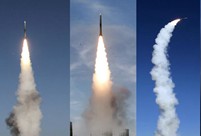

Beijing's environmental performance ranks fifth among China's 289 cities above prefecture level, making it the only city in North China in the top 20, according to a study by international experts.
Shenzhen, Xiamen and Haikou are the top three most eco-friendly cities, according to the Green China Urbanization Index, which was released by the Japan-based think tank Cloud River Urban Research Institute during the Fourth Global Think Tank Summit in Beijing in late June.
Beijing's ranking may conflict with public sentiment, however, as air pollution has become a great concern of the public.
Zhou Muzhi, president of the think tank and a professor at Tokyo Keizai University, said many other indicators should be taken into account when evaluating a city's environment.
The institute's index covers soil and water conditions, climate conditions, natural disasters, the pollution load, environmental protection efforts, resource efficiency, transportation networks and urban facilities.
Beijing's environmental load is better than the average level of all 289 cities and Beijing's level of PM 2.5 (particulates of less than 2.5 micrometers in diameter) is not the highest in China. The city is simply located too close to the areas with the highest PM 2.5 levels.
"China needs an internationalized vision and more modern dimensions to analyze its urbanization, instead of narrow-minded environmental concepts," said Zhou.
The 2015 index also contains social and economic metrics. Beijing, Shanghai, Shenzhen, Guangzhou and Suzhou were the top five.
"Digital management is a necessary step in making China's urbanization healthier. The purpose of the international collaboration is to provide digital benchmarks and references for China's urbanization in a multi-dimensional way, with hundreds of data sets," said Zhou.
More than 50 Chinese, Japanese and European planning experts, led by Yang Weimin, vice-minister of the office at the Central Leading Group on Financial and Economic Affairs, Takashi Onishi, president of the Science Council of Japan, and Italian designer Mario Bellini, participated in the project.
The study ran for nearly three years and a completed version of the report on indexes covering all 289 cities will be released in the second half of this year.
Data are very difficult to get in China and that is one of the biggest challenges facing the research team, said Zhou, adding all the data they used were publicly released.
"China's data are highly fragmented. There is a lack of consistency or standardization among data provided by different departments, levels of governments or in different years," he said.
Economic data are relatively detailed, Zhou said, while environmental data are severely distorted and social data are very insufficient.
The team adopted big data analytics to derive some relevant indicators. They even used satellite data and converted the geospatial data into accessible statistics, said Zhou.
He said the purpose of ranking is to provide a reference and direction for Chinese cities to evaluate their path to urbanization.
China aims for an urbanization rate of 60 percent by 2020. The figure was 54.8 percent by the end of 2014, according to the National Bureau of Statistics.
Last year, the State Council, the nation's cabinet, announced an urbanization plan running through 2020 that is intended to eliminate any obstacles to urbanization and expand rural residents' access to social services and education.
 4-year-old cute 'monk' spends summer holiday in temple
4-year-old cute 'monk' spends summer holiday in temple College graduates shining on the red carpet in Nanjing
College graduates shining on the red carpet in Nanjing PLA soldiers launch guided missiles in confrontation exercise
PLA soldiers launch guided missiles in confrontation exercise One woman’s fight against dog eaters
One woman’s fight against dog eaters Beautiful and smart - post-90s college teacher goes viral
Beautiful and smart - post-90s college teacher goes viral Top 10 luxury houses in the world
Top 10 luxury houses in the world  National Geographic: best photos during journey
National Geographic: best photos during journey Couples who engage in meaningful and deep conversations are happier
Couples who engage in meaningful and deep conversations are happier Maldives resort rated best hotel of 2015
Maldives resort rated best hotel of 2015  Through AIIB, China can learn to lead
Through AIIB, China can learn to lead Greece shuts banks as default looms, closer to euro exit
Greece shuts banks as default looms, closer to euro exit Xi'an 'Superman'shines a light on the city's errand runners
Xi'an 'Superman'shines a light on the city's errand runners Pole dancers challenge dog meat festival with provocative photo series
Pole dancers challenge dog meat festival with provocative photo seriesDay|Week